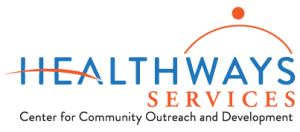Life Care Planning
What is Life Care Plan?
Life care planning is an important component of the expertise Healthways Services can bring to an injury litigation case or claim. This process assesses the lifetime health, education and rehabilitation needs of parties suffering from a catastrophic injury, and then projects the costs of meeting those needs.
Our Life Care Plans are carefully developed using accepted, defensible methodology. Review of medical records and other documentations, client/family interviews, home assessments, consultation input, and identification and costs of available resources to meet identified needs are central elements to life care planning process.
A comprehensively life care plan will detail the costs associated with the goods and services to be required over the lifetime of an individual with a catastrophic disability or injury, including are possible items from the following areas:
- Projected Evaluations: Non-physician evaluations such as physical and/or occupational therapy evaluations; driver evaluations; psychological and behavioral evaluations; recreational evaluations, etc.
- Projected Therapies: Physical and/or occupational therapy; mental health counseling; case management, etc.
- Diagnostic Testing/Educational Assessment: including neuropsychological, vocational evaluation, and in the case of children and adults, psycho-educational testing, educational consultants, etc.
- Wheelchairs / Mobility / Maintenance / Accessories: manual chairs, power chairs, shower chairs, backup shares, cushions, batteries etc.
- Orthotics and/or Prosthetics: repair, maintenance, and supplies
- Orthopedic Equipment and/or Other Durable Medical Equipment: walkers, canes, crutches, bath chairs, lifts, cushions, etc…
- Aids for Independent Function: adaptive cutlery, one-handed keyboards, augmentative communication, voice activated software, environmental control systems, etc.
- Home Furnishing and Accessories: specialty beds and mattresses, patient lifts, bath bench/chair, lift chair, etc.
- Medication and Supplies: prescription and nonprescription drugs such as anti-depressants, pain medication, over-the-counter medications (Advil, Tylenol), catheters, bowel or bladder program supplies, disposable gloves, diapers, crutch tips, etc.
- Home and/or Facility Care: personal assistance services, home health care needs, etc.
- Routine Future Medical Care: physiatrist, orthopedics, plastic surgeon, urologist, primary care, etc.
- Aggressive Treatments, Surgeries, Treatment of Complications: functional electrical stimulation, decubitus ulcer closure, scar removal, tendon releases, revision surgery for boney growths, inpatient pain management programming, etc.
- Architectural Renovation and Home Modification: accessibility evaluations, bathroom modifications for safety and accessibility, entry/egress accessibility, ramps, kitchen modifications, etc.
- Health and Strength Maintenance: specialty recreation needs, hunting and fishing adaptive equipment, card shuffler, card holder, outriggers for snow skiing, exercise equipment, health club memberships, etc.
- Transportation and Vehicle Modifications: hand controls, left foot extender, wheelchair lockdowns, accessible van with wheelchair lift, etc.
- Vocational Services/Employment Plans: vocational counseling, vocational rehabilitation case management, job placement, job coaching, vocational training programs, etc.
*Note: Since each Life Care Plan is individualized based upon the needs of a particular individual, not every area outlined above would be relevant for a particular individual.
How are Life Care Plans used?
Life Care Plans can be helpful in several situations:
- Plaintiff and defense attorneys use life care plans to assist in understanding and communicating general damages in catastrophic injury cases.
- Insurance companies use life care plans in planning cost and payout time frames for insured.
- Individuals and families use life care plans to help with planning, resource identification, and health care-related issues.
Who Needs a Life Care Plan?
A partial list includes:
- Stroke and brain injuries;
- Amputations;
- Aneurysms;
- Anoxic and neurapraxic brain injuries;
- Concussion;
- Autism;
- Birth injuries;
- Brachial plexus injuries;
- Burns;
- Behavioral cases;
- Blindness;
- Deafness;
- Emphysema;
- Cerebral palsy;
- Medical malpractice;
- Orthopedic injury ;
- Spinal cord injury;
- Reflex Sympathetic Dystrophy;
- Personal injury cases;
- Chemical exposure cases;
- And many more.
As a Certified Life Care Planner we cover just as much as any other professional licensure or disciplines, such as License Professional Counselor (LPC), Certified Rehabilitation Counselor (CRC), Certified Case Manager (CCM), Certified Nurse Life Care Planners (CNLCP) or Medical Physician Experts and many more. A Life Care Planner must understand the long term requirements and use scientific-based medicine to present data. Knowledge of the administrative aspect of medicine, the charging mechanism involved in medicine, as well as the insurance interrelationship with medical care is essential within this scope of practice.
Foundations of Industrial Injury and Evaluation: Includes but not limited to orthopedic and neurological disorders of injured workers, psychological aspects of industrial injuries, work related injuries and chronic pain response, evaluating function within the chronic pain patient, evaluating the psychological profile of the chronic pain patient, and applications of symptom magnification of the industrially injured worker.
Medical Correlates of Disability: Includes but not limited to orthopedic and neurological diagnoses and their applied disability periods and limitations, orthopedic and neurological injuries associated with workplace trauma, personal injury diagnoses and subsequent disability periods of limitations.
Foundations of Life Care Planning: Includes but not limited to philosophy in planning; approaches to planning and presentation formats; ethics; future trends; and methodologies.
Resource Development: Includes but not limited to legislative developments, equipment and procedure information sources, technological advances, research/outcome studies and professional association specializations.
Medical/Treatment Issues: Includes but not limited to catastrophic injury complication management; mobility issues; bowel/bladder care; medication and surgical interventions; therapy issues; and evaluation techniques.
Case and Medical Management in Catastrophic Disability: Includes but not limited to facility/modality assessment; environmental adaptations; transportation; family adjustment/dynamics and counseling; psychological/behavioral issues; coordinating special needs; collateral sources; and educational systems.
Vocational Issues: Includes but not limited to earning capacity analysis, vocational evaluation; labor market information; return to work issues in disability compensation systems; testing issues; and work life/earnings cycle assessment.
Medical/Rehabilitation Testimony: Includes but not limited to roles of medical and rehabilitation experts; working with economists; structured settlements and reserve setting issues; malpractice issues; and scope of practice issues.

